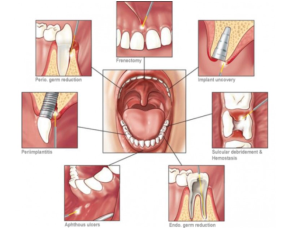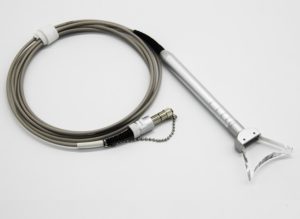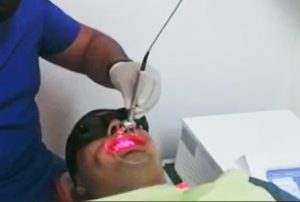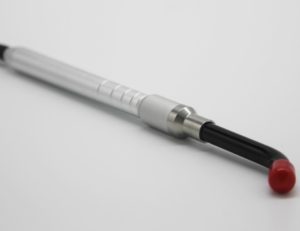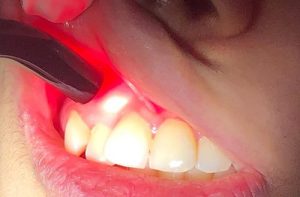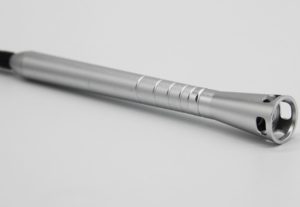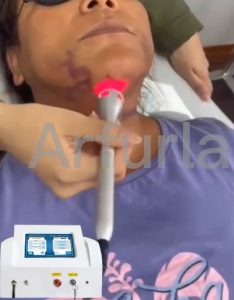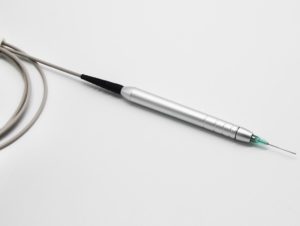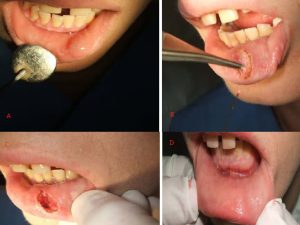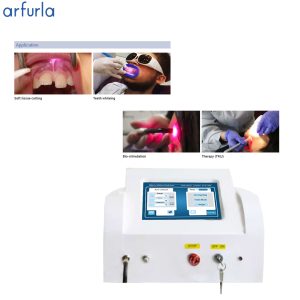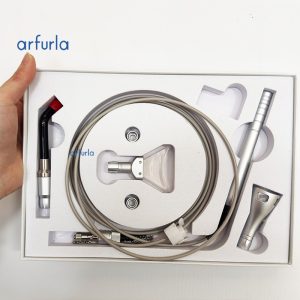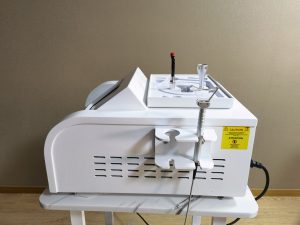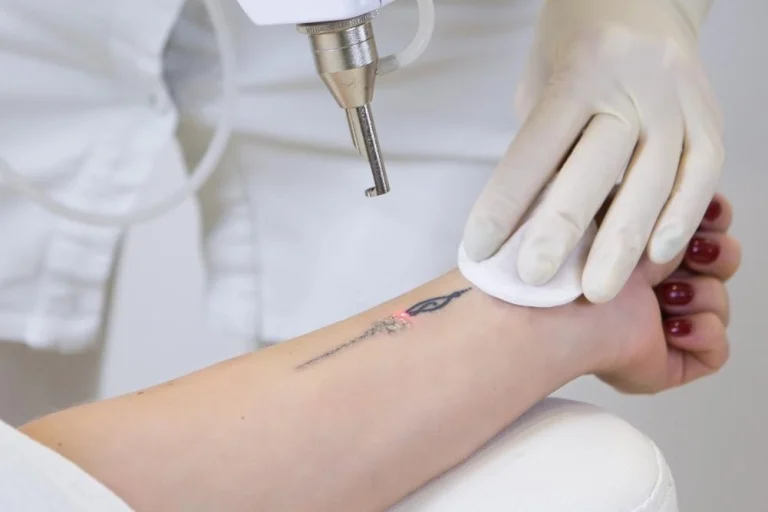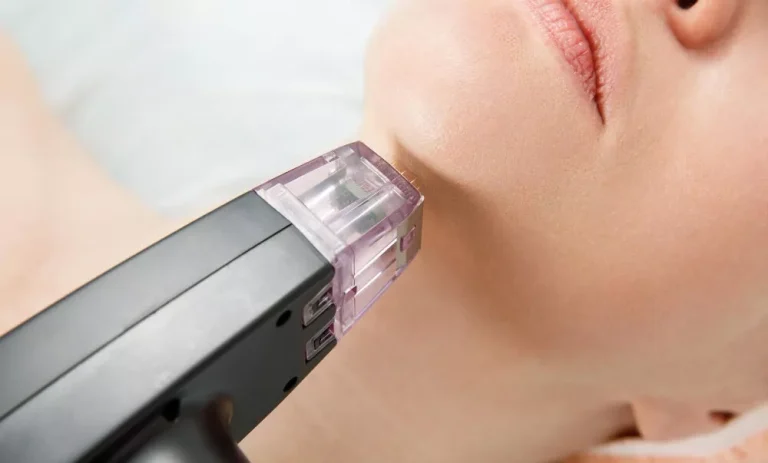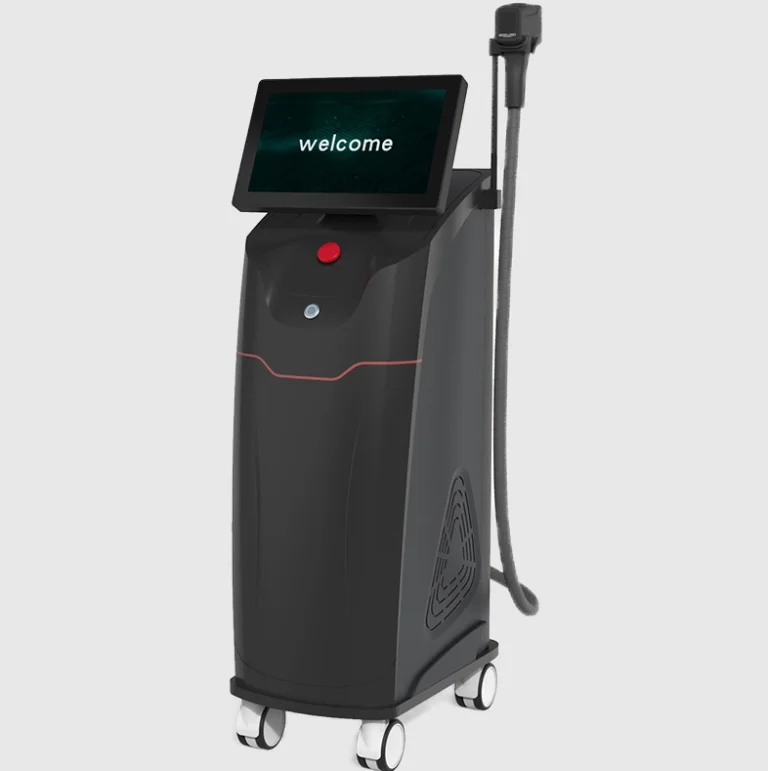Arfurla dental equipment 980nm diode laser for teeth whitening pain relief Reduce inflammation and swelling and soft tissue cutting treatment
Laser with a wavelength of 1470nm has dual absorption characteristics:
Water absorption: This wavelength is highly absorbed by the water in the tissue, causing the water molecules in the cells to quickly heat up and vaporize, thereby achieving precise cutting and vaporization effects.
Hemoglobin absorption: At the same time, the 1470nm laser can also be absorbed by hemoglobin, which enables the blood vessels to be coagulated synchronously during the cutting process and reduce intraoperative bleeding.
Hemostasis and sterilization: The thermal effect can close small blood vessels -hemostasis and destroy bacterial cell membranes -sterilization, which is suitable for soft tissue surgery and infection control.
Common application for 980nm dental diode laser treatment with 4 treatment heads:
Our Whitening Tip is specially designed for professional teeth whitening procedures. It features a unique structure that segments the dental arch into four quadrants. The whitening head is carefully crafted to fit one quadrant at a time, enabling precise and even whitening throughout the entire mouth.
Key Features of 980 dental laser for teeth whitening treatment:
Quadrant-Based Design:Treats one quadrant at a time for greater control and accuracy during whitening.
Precision-Fit Head:The applicator head is tailored to the width of a single quadrant, ensuring uniform gel coverage and consistent results.
Time-Efficient Performance:Optimizes treatment efficiency by delivering even whitening with shorter chair time.
Clinical Applications of 980 dental laser for teeth whitening:
Professional Teeth Whitening:Ideal for in-clinic whitening sessions, ensuring balanced results across all teeth.
Focused Application:Enables selective whitening of individual quadrants, enhancing treatment precision.
Aesthetic Dentistry:Supports cosmetic treatments by delivering bright, consistent results for a visibly improved smile.
Biostimulation Handpiece of 980 dental laser for recovery
Engineered for dental clinical applications, this handpiece utilizes low-level laser therapy (LLLT) to accelerate the healing of oral tissues, relieve post-operative discomfort, and support infection prevention. Its ergonomic design ensures precision and ease of use, helping dental professionals provide enhanced patient care.
Key Features of 980 dental laser pain relief:
Accelerated Healing:Stimulates cell regeneration and tissue repair following oral surgeries or extractions, promoting faster wound healing.
Pain and Inflammation Reduction:Minimizes post-operative pain and swelling, improving patient comfort during recovery.
Infection Prevention:Boosts local immune response, reducing the likelihood of bacterial infection in the treated area.
Clinical Applications of 980 1470nm diode laser for soft tissue regeneration:
Periodontal Treatment Support:Aids in soft tissue regeneration and reduces inflammation after periodontal procedures.
Implant and Extraction Aftercare:Encourages quicker healing and alleviates pain following dental implants or tooth extractions.
Oral Ulcer Management:Provides effective pain relief and speeds up the recovery of oral ulcers through targeted biostimulation.
Post-Endodontic Therapy:Helps control inflammation and discomfort after root canal treatments, improving patient outcomes.
This handpiece is an essential tool for enhancing post-surgical recovery in dental settings, offering faster healing times and improved overall treatment effectiveness.
TMJ Therapy Handpiece of 1470 laser for dental use:
Specially crafted for oral and maxillofacial treatments, the TMJ Therapy Handpiece is highly effective in addressing temporomandibular joint (TMJ) disorders. Equipped with compact, specially designed TMJ tips, it allows for precise treatment in targeted areas, providing versatile use and effective pain relief for TMJ-related conditions.
Key Features of 1470nm laser for dental pain relief:
Focused TMJ Treatment:Engineered to improve joint function and relieve discomfort in patients suffering from TMJ disorders.
Compact TMJ Tips:Small-sized applicators enable accurate access to the jaw joint and surrounding muscles, enhancing treatment flexibility.
Pain and Inflammation Relief:Helps reduce tension, swelling, and discomfort in the TMJ region, supporting a quicker recovery process.
Clinical Applications of 1470nm diode dental laser for pain relief:
TMJ Disorder Therapy:Designed specifically for treating joint stiffness, pain, and movement limitations associated with TMJ dysfunction.
Precision Oral Therapy:Ideal for broader oral treatments that require targeted laser application, enhancing treatment outcomes and patient satisfaction.
Jaw Muscle Relaxation:Effectively relieves muscular tension in the jaw, which commonly contributes to TMJ symptoms.
Cutting tip on dental laser 980 1470nm
Designed for a wide range of dental applications, this handpiece features a direct-connect fiber tip holder that is compatible with various therapy attachments. Its adaptable design allows integration with multiple dental procedures, making it an essential tool for delivering comprehensive and efficient oral treatments.
Key Features of dental laser for soft tissue cutting:
Direct-Connect Fiber Tip Holder:Enables easy attachment to different therapy handles, ensuring smooth compatibility across multiple dental systems.
Versatile Treatment Capabilities:Supports everything from laser-based therapies to surgical procedures within one platform.
Streamlined Functionality:Allows for fast transitions between treatment types, enhancing workflow and reducing chair time.
Clinical Applications of 1470 dental laser for soft tissue cutting:
Laser Dentistry:Integrates seamlessly with dental laser systems for soft tissue treatments, biostimulation, and pain management.
Dental Surgery:Facilitates precise surgical tasks with improved control and adaptability.
Comprehensive Oral Treatments:Ideal for multi-use in dental clinics,offering flexibility to perform various procedures using a single handpiece.
Cutting tip
Designed for a wide range of dental applications, this handpiece features a direct-connect fiber tip holder that is compatible with various therapy attachments. Its adaptable design allows integration with multiple dental procedures, making it an essential tool for delivering comprehensive and efficient oral treatments.
Key Features
Direct-Connect Fiber Tip Holder:Enables easy attachment to different therapy handles, ensuring smooth compatibility across multiple dental systems.
Versatile Treatment Capabilities:Supports everything from laser-based therapies to surgical procedures within one platform.
Streamlined Functionality:Allows for fast transitions between treatment types, enhancing workflow and reducing chair time.
Clinical Applications of 980 1470 dental laser soft tissue dentistry treatment:
Laser Dentistry:Integrates seamlessly with dental laser systems for soft tissue treatments, biostimulation, and pain management.
Dental Surgery:Facilitates precise surgical tasks with improved control and adaptability.
Comprehensive Oral Treatments:Ideal for multi-use in dental clinics,offering flexibility to perform various procedures using a single handpiece.
Advantages of diode lasers in dentistry:
1.Fast diagnostics
2.Effective reduction of bacteria and inflammation
3.Less anesthesia
4.Reduction of swelling and pain
5.Surgery without blood or stitches
6.Faster healing
7.Bone regeneration
8.Treatment of hypersensitivity
Advantages for patients:
1.Safe and comfortable surgery
2.Faster postoperative healing
3.Most surgeries are free of bleeding
4.Analgesic effect
5.Eliminates bacteria without the use of antibiotics
FAQ
1.Can hard tissue be cut?
Yes, it can be used for caries removal (removal of decayed tooth tissue), tooth preparation (such as grinding off part of the tooth before making a crown), alveolar bone trimming (such as bone protrusion treatment after tooth extraction), etc. Compared with traditional high-speed mobile phones (drills), it has low vibration and low heat generation during cutting, which can reduce patient discomfort (such as soreness and sensitivity) and cause less damage to surrounding healthy tissues.
2.Which is better, laser teeth whitening or ordinary light whitening?
Laser whitening is usually more effective, especially in terms of efficiency and durability. The laser energy is more concentrated, which can accurately activate the whitening agent, accelerate its decomposition into free oxygen (destroy pigment molecules), and promote the penetration of the whitening agent into the deep layer of tooth enamel. Ordinary lamp whitening activates the whitening agent through visible light (such as blue light), but the energy is dispersed and the activation efficiency is low.
3.Are there any side effects?
There are mild short-term side effects, and very few long-term side effects (under standard operation).
Short-term side effects:
Tooth sensitivity:When laser cuts hard tissue or whitens, it may temporarily stimulate the dentinal tubules, resulting in sensitivity to cold and heat 1-3 days after surgery (most of them can be relieved by themselves).
Gingival irritation:If the laser acts on the gums (such as periodontal treatment), improper energy control may cause mild burns to the gums (manifested as redness, swelling, and pain), but the incidence is extremely low under standard operation.
Temporary abnormal taste:A few people may feel a slight change in taste 1-2 days after surgery, which is related to the temporary stimulation of the mucosa.
4. Can it treat periodontal disease?
The core of periodontal disease is that dental plaque and tartar stimulate the gums and periodontal tissues, leading to inflammation, periodontal pocket formation, and alveolar bone absorption.
Sterilization: Specific wavelengths (such as 810nm semiconductor lasers) can penetrate periodontal pockets (depth 2-6mm), directly destroy bacterial cell membranes (such as Porphyromonas gingivalis), and kill biofilms (“protective layers” formed by bacterial aggregation), which is more thorough than traditional scraping (mechanical removal).
Removal of diseased tissue: Diode lasers can vaporize inflammatory granulation tissue and necrotic epithelium in periodontal pockets, reducing inflammatory stimulation.
Promote tissue healing: The thermal effect of the laser can close the tiny blood vessels in the periodontal pockets (hemostasis), while stimulating the activity of fibroblasts and accelerating the attachment of the gums to the root surface (promoting periodontal tissue regeneration).
Applicable scenarios: mild to moderate periodontitis (removal of subgingival plaque), debridement after periodontal flap surgery, peri-implantitis (sterilization to avoid infection), etc. Compared with traditional subgingival scaling, laser treatment causes less bleeding, less discomfort to patients, and faster recovery after surgery.

